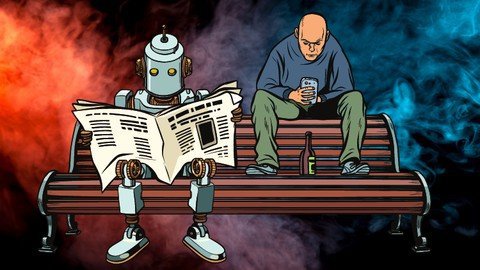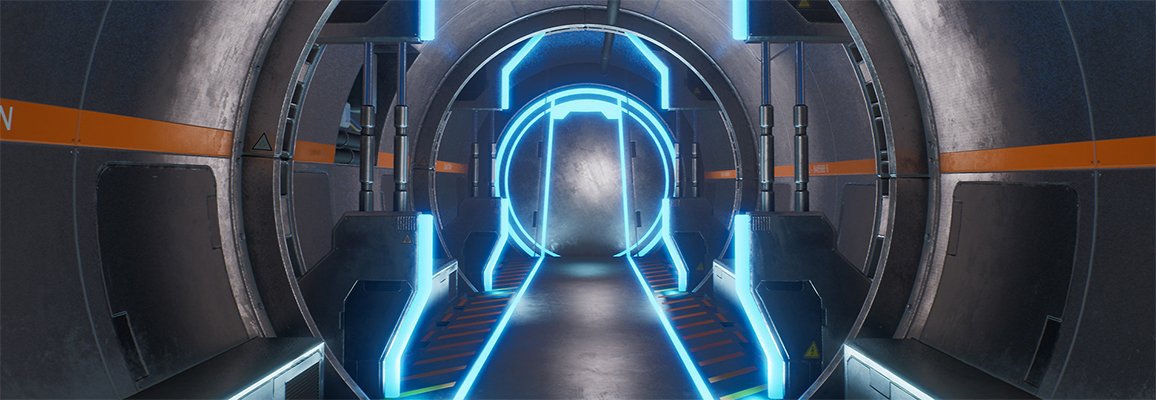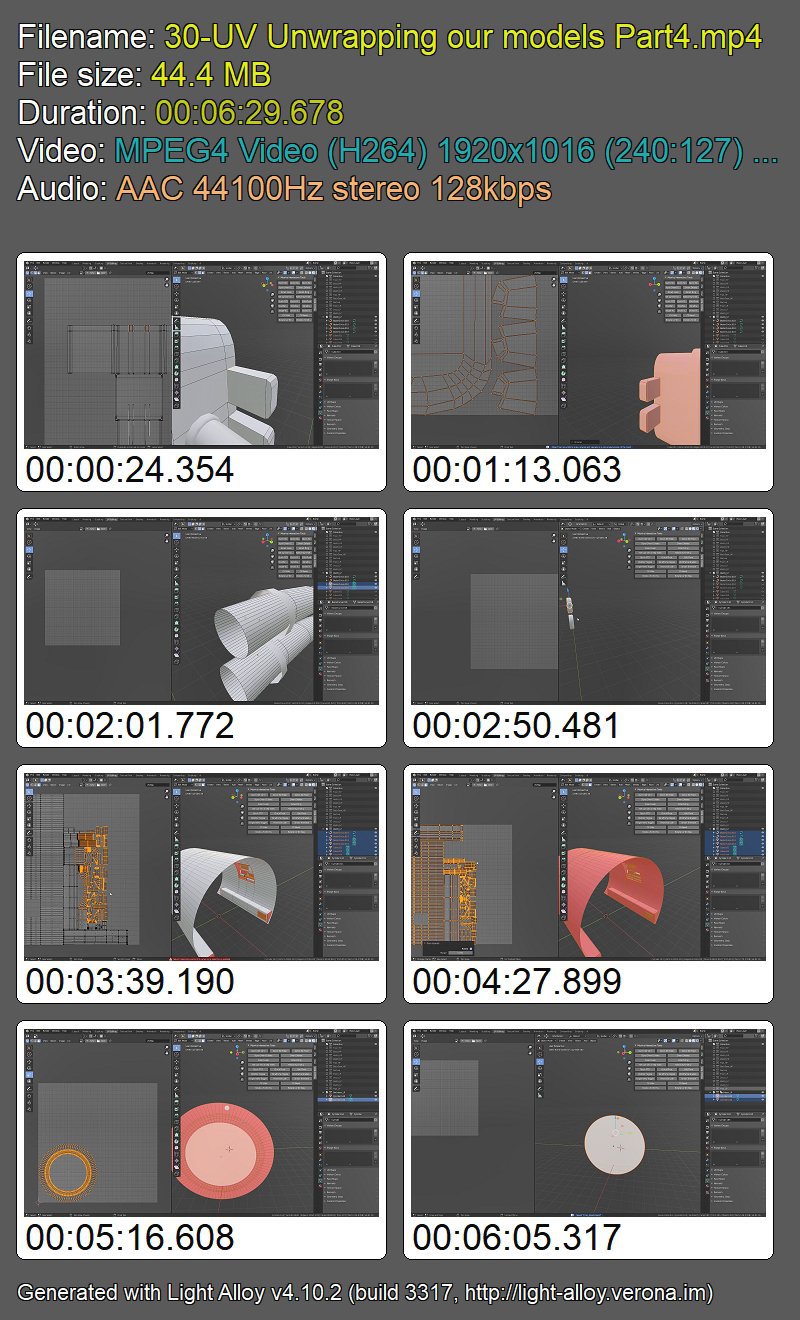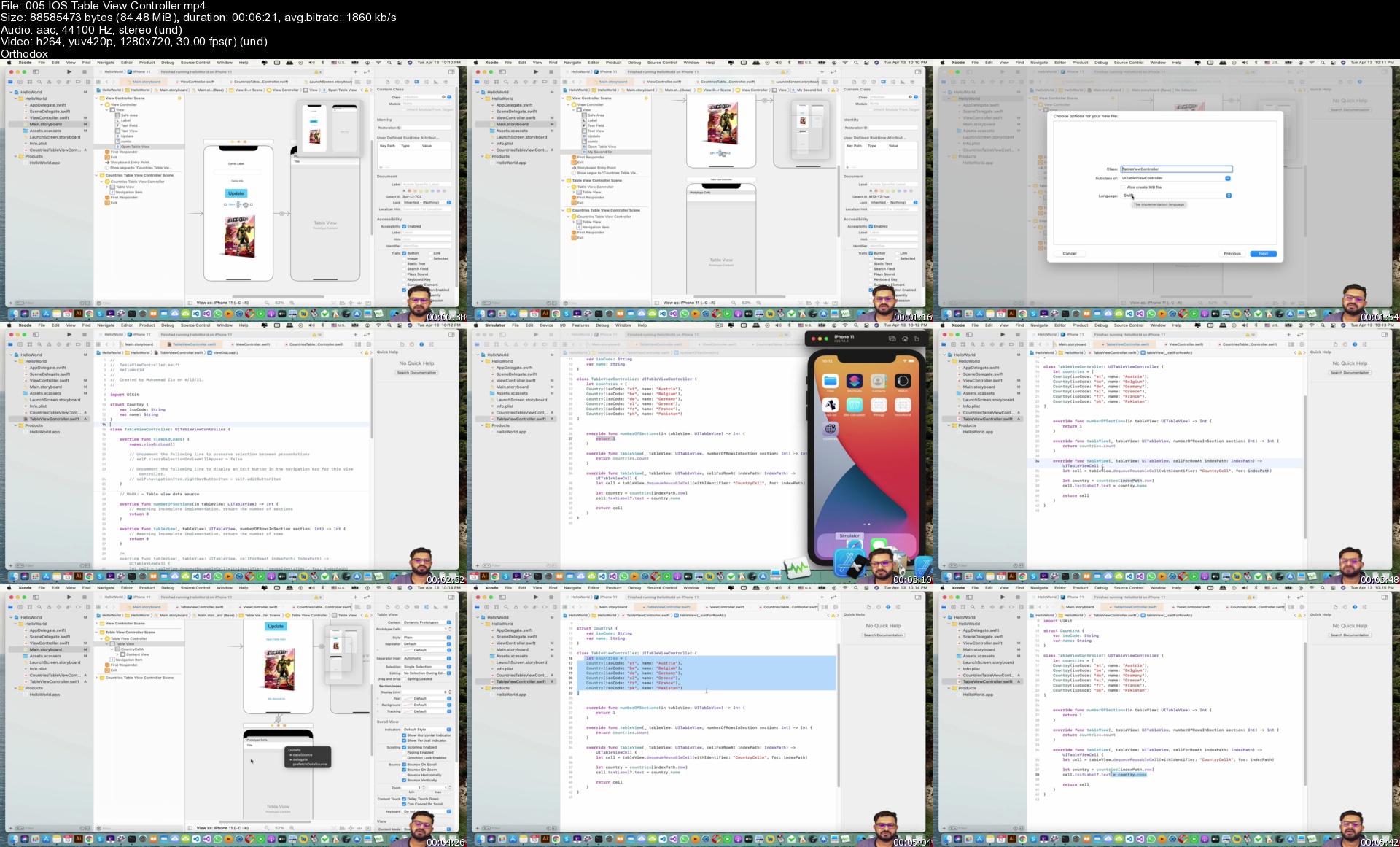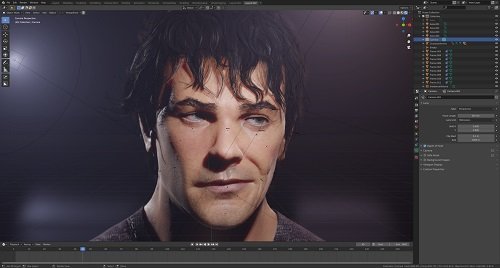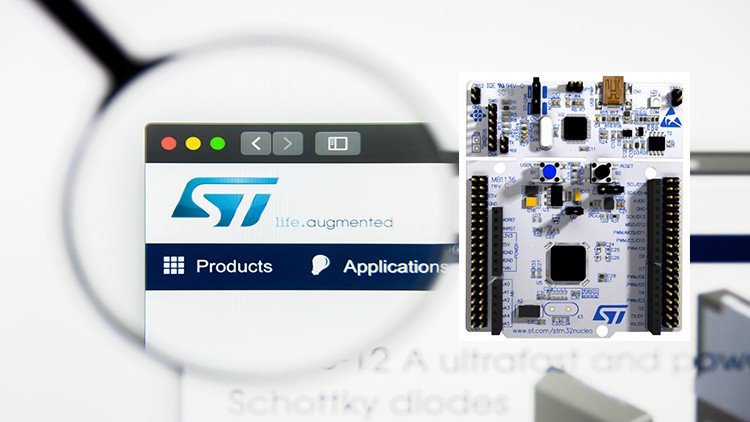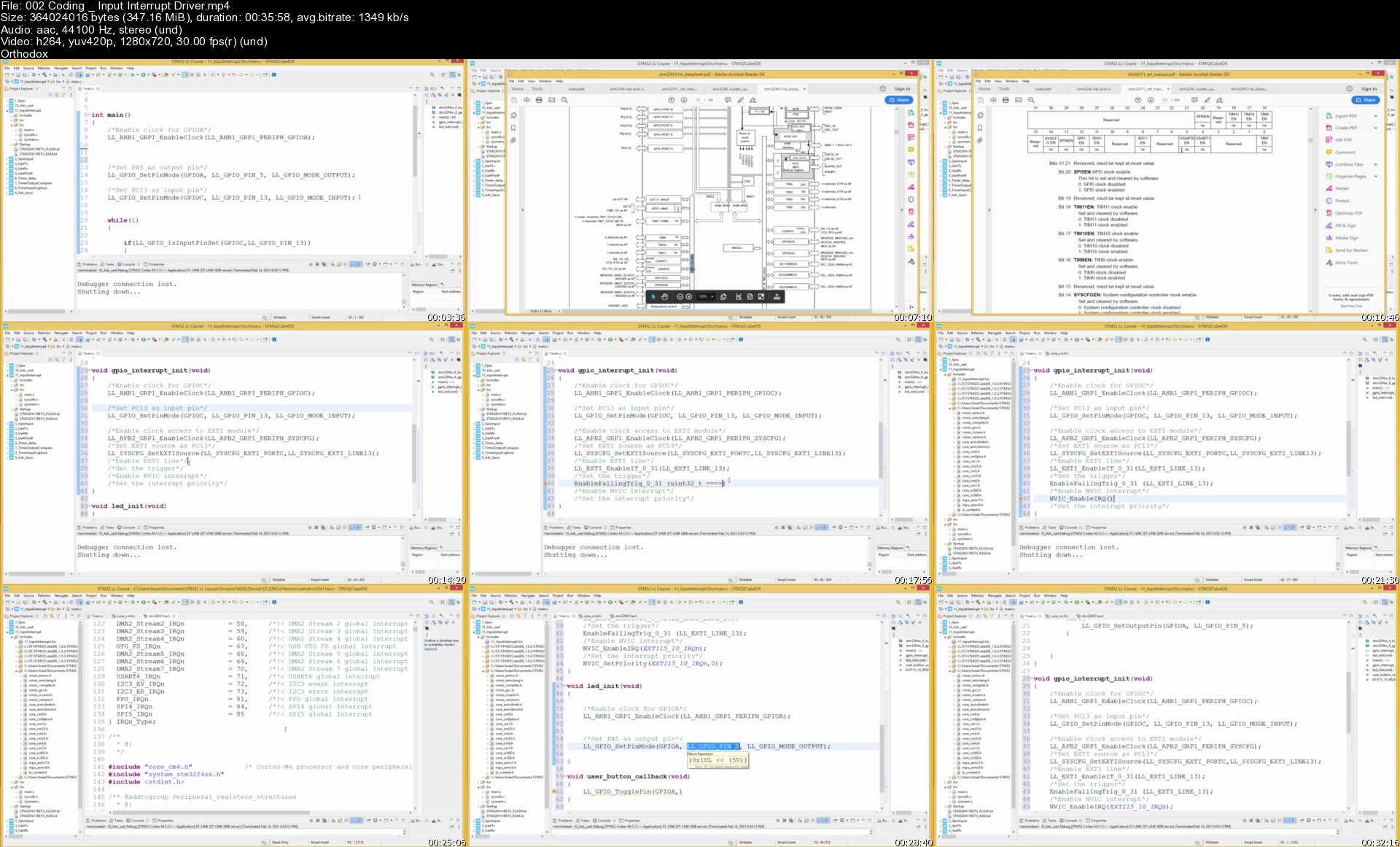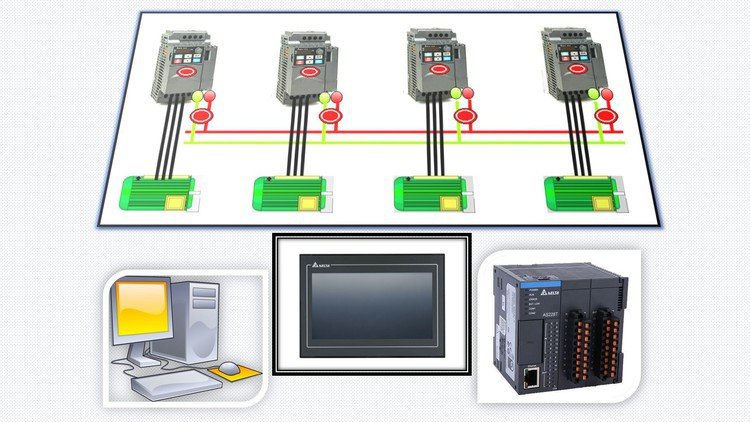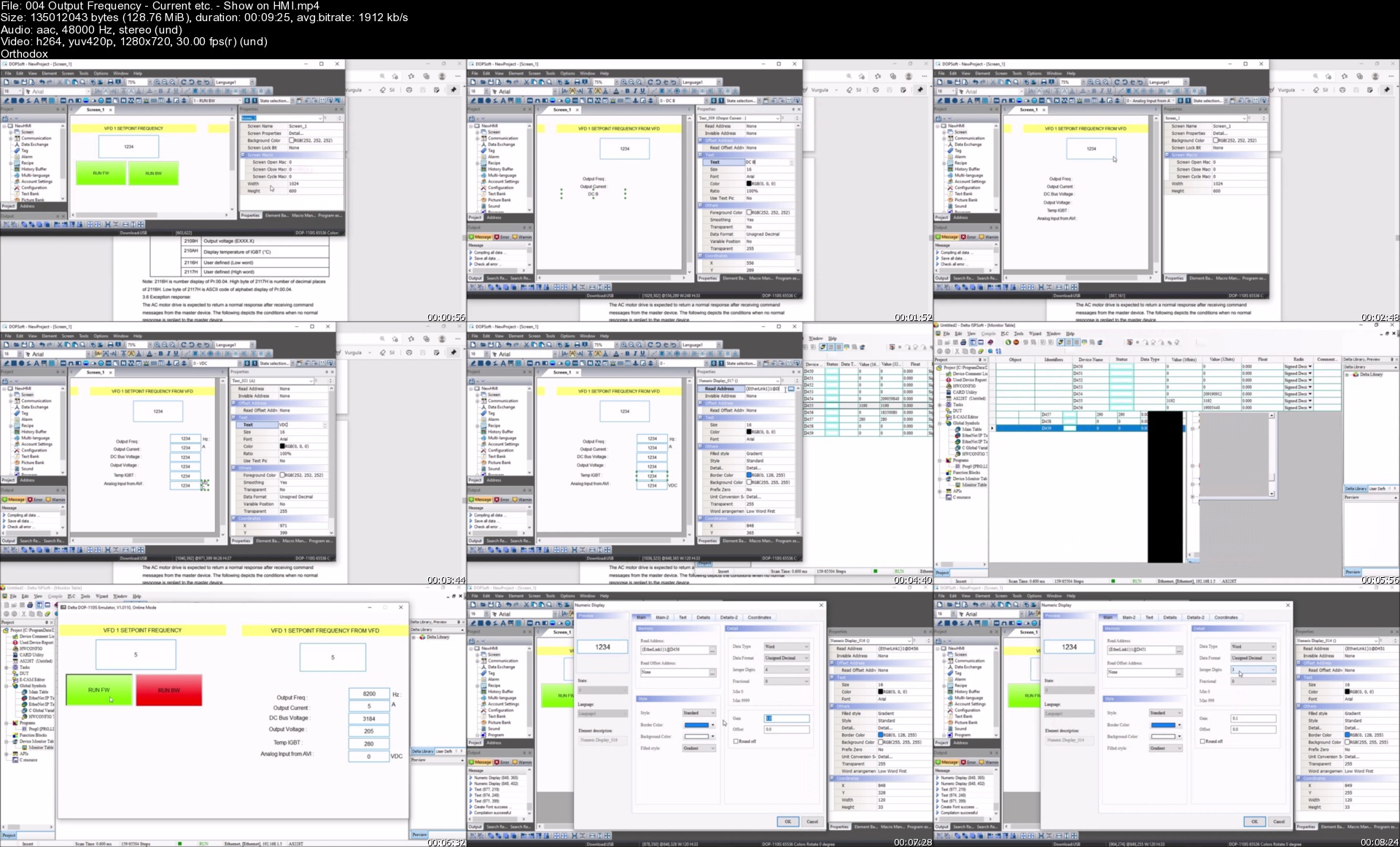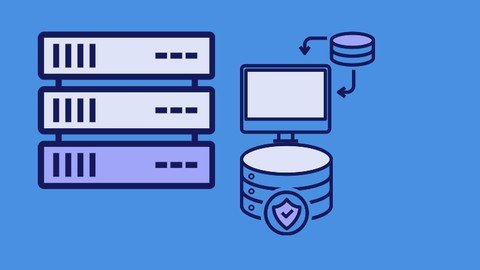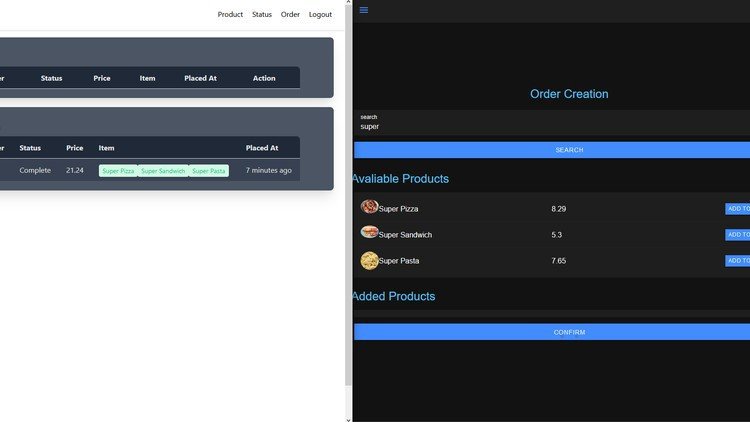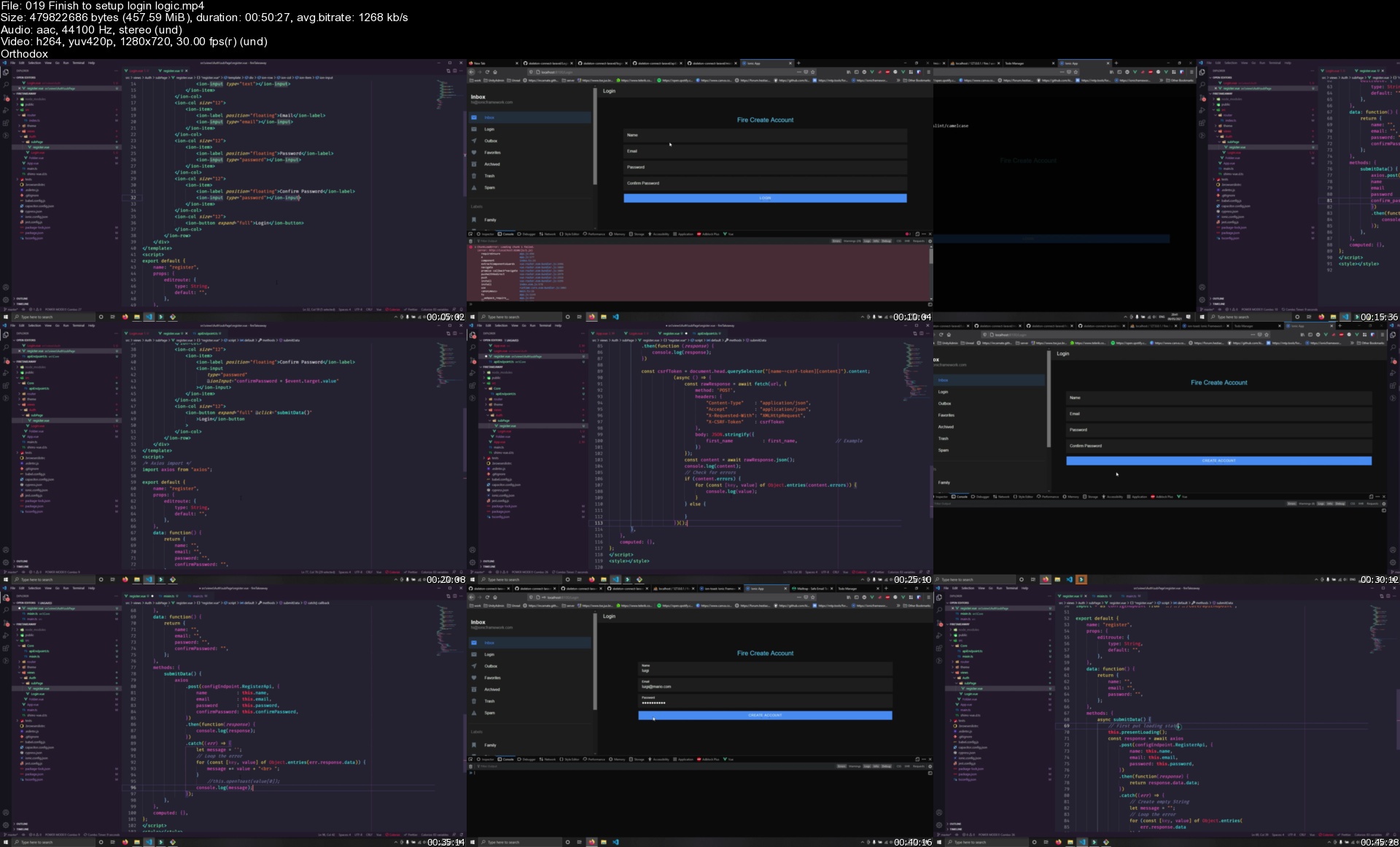The Complete Healthcare Artificial Intelligence Course 2021 (Updated 04/2021)
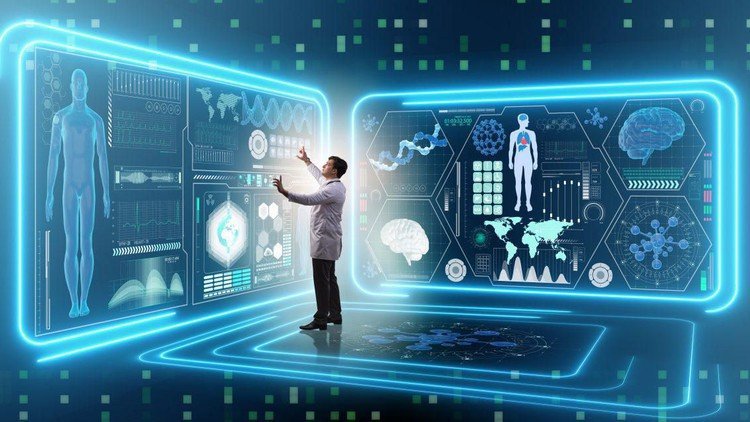
The Complete Healthcare Artificial Intelligence Course 2021 (Updated 04/2021)
MP4 | Video: h264, 1280x720 | Audio: AAC, 44.1 KHz, 2 Ch
Genre: eLearning | Language: English + srt | Duration: 117 lectures (17h 56m) | Size: 6.5 GB
Creating powerful AI model for Real-World Healthcare applications with Data Science, Machine Learning and Deep Learning
What you'll learn:
Pandas.
Matplotlib.
Sigmoid activation function.
Tanh activation function.
ReLU activation function.
Leaky Relu activation function.
Exponential Linear Unit activation function.
Swish activation function.
Markov models.
Support Vector Machines
Other common classifiers
Import data from the UCI repository.
Convert text input to numerical data.
Build and train classification algorithms.
Compare and contrast classification machine learning.
Building the AI.
Machine learning and deep learning model based on the given data with high accuracy.
RF with Response Coding.
Maximum voting Classifier.
Stacking model.
Random Forest Classifier.
One-hot Encoding.
NLP (Natural Language Processing)
NLTK (Natural Language Toolkit)
Logistic Regression.
Naive Bayes
Response Encoding
Linear Support Vector Machines
Geolocation Features.
Handling Missing Data And Anomalies in Python.
Data standardization.
Temporal Features.
Seaborn
Deep Learning.
Keras.
Google Colab .
Anaconda.
Jupiter Notebook.
Requirements
There will be no Prerequisites.
Basic knowledge of Python will be good.
But everything will be taught from the round up.
Description
Interested in the field of Machine Learning, Deep Learning and Artificial Intelligence? Then this course is for you!
This course has been designed by a software engineer. I hope with my experience and knowledge I did gain throughout years, I can share my knowledge and help you learn complex theory, algorithms, and coding libraries in a simple way.
I will walk you step-by-step into the Machine Learning, Artificial Intelligence and Deep Learning. With every tutorial, you will develop new skills and improve your understanding of this challenging yet lucrative sub-field of Data Science.
This course is fun and exciting, but at the same time, we dive deep into Machine Learning, Deep Learning and Artificial Intelligence . Throughout the brand new version of the course we cover tons of tools and technologies including:
Deep Learning.
Google Colab
Anaconda
Jupiter Notebook
Artificial Intelligent In Healthcare.
Artificial Neural Network.
Neuron.
Activation Function.
Keras.
Pandas.
Seaborn.
Feature scaling.
Matplotlib.
Generating a DNA Sequence.
Data Pre-processing.
Sigmoid Function.
Tanh Function.
ReLU Function.
Leaky Relu Function.
Exponential Linear Unit Function.
Swish function.
Markov Models.
K-Nearest Neighbors Algorithms (KNN).
Support Vector Machines (SVM).
Importing library and data.
Deep feedforward networks.
Analysing Data.
Exploratory Analysis.
Handling Missing Data And Anomalies in Python.
Data standardization.
Temporal Features.
Geolocation Features.
Data Scaling.
Data Visualization.
Visualizing Geolocation Data.
Understanding Machine Learning Algorithm.
Splitting Data into Training Set and Test Set.
Training Neural Network.
Model building.
Analysing Results.
Model compilation.
A Comparison Of Categorical And Binary Problem.
Make a Prediction.
Testing Accuracy.
Confusion Matrix.
ROC Curve.
One-hot Encoding.
NLP (Natural Language Processing).
NLTK (Natural Language Toolkit).
Logistic Regression.
Naive Bayes.
Response Encoding.
Linear Support Vector Machines.
RF with Response Coding.
Random Forest Classifier.
Stacking model.
Maximum voting Classifier.
Moreover, the course is packed with practical exercises that are based on real-life examples. So not only will you learn the theory, but you will also get some hands-on practice building your own models. There are five big projects on healthcare problems and one small project to practice. These projects are listed below:
Predicting Taxi Fares in New York City
DNA Classification Project.
Heart Disease Classification Project.
Diagnosing Coronary Artery Disease Project.
Breast Cancer Detection Project.
Predicting Diabetes with Multilayer Perceptrons Project.
Iris Flower.
Medical Treatment Project.
And as a bonus, this course includes one extra big projects for each month.
Who this course is for
Anyone interested in Machine Learning.
Students who have at least high school knowledge in math and who want to start learning Machine Learning, Deep Learning, and Artificial Intelligence
Any intermediate level people who know the basics of machine learning, including the classical algorithms like linear regression or logistic regression, but who want to learn more about it and explore all the different fields of Machine Learning, Deep Learning, Artificial Intelligence.
Any people who are not that comfortable with coding but who are interested in Machine Learning, Deep Learning, Artificial Intelligence and want to apply it easily on datasets.
Any students in college who want to start a career in Data Science
Any data analysts who want to level up in Machine Learning, Deep Learning and Artificial Intelligence.
Any people who are not satisfied with their job and who want to become a Data Scientist.
Any people who want to create added value to their business by using powerful Machine Learning, Artificial Intelligence and Deep Learning tools. Any people who want to work in a Car company as a Data Scientist, Machine Learning, Deep Learning and Artificial Intelligence engineer.
Any people who want to create added value to the local hospital by using powerful Machine Learning, Artificial Intelligence and Deep Learning tools.
Any people who want to work in healthcare field as a Data Scientist, Machine Learning, Deep Learning and Artificial Intelligence engineer.
Any people who want to work in a Taxi Company as a Data Scientist, Machine Learning, Deep Learning and Artificial Intelligence engineer.
Homepage
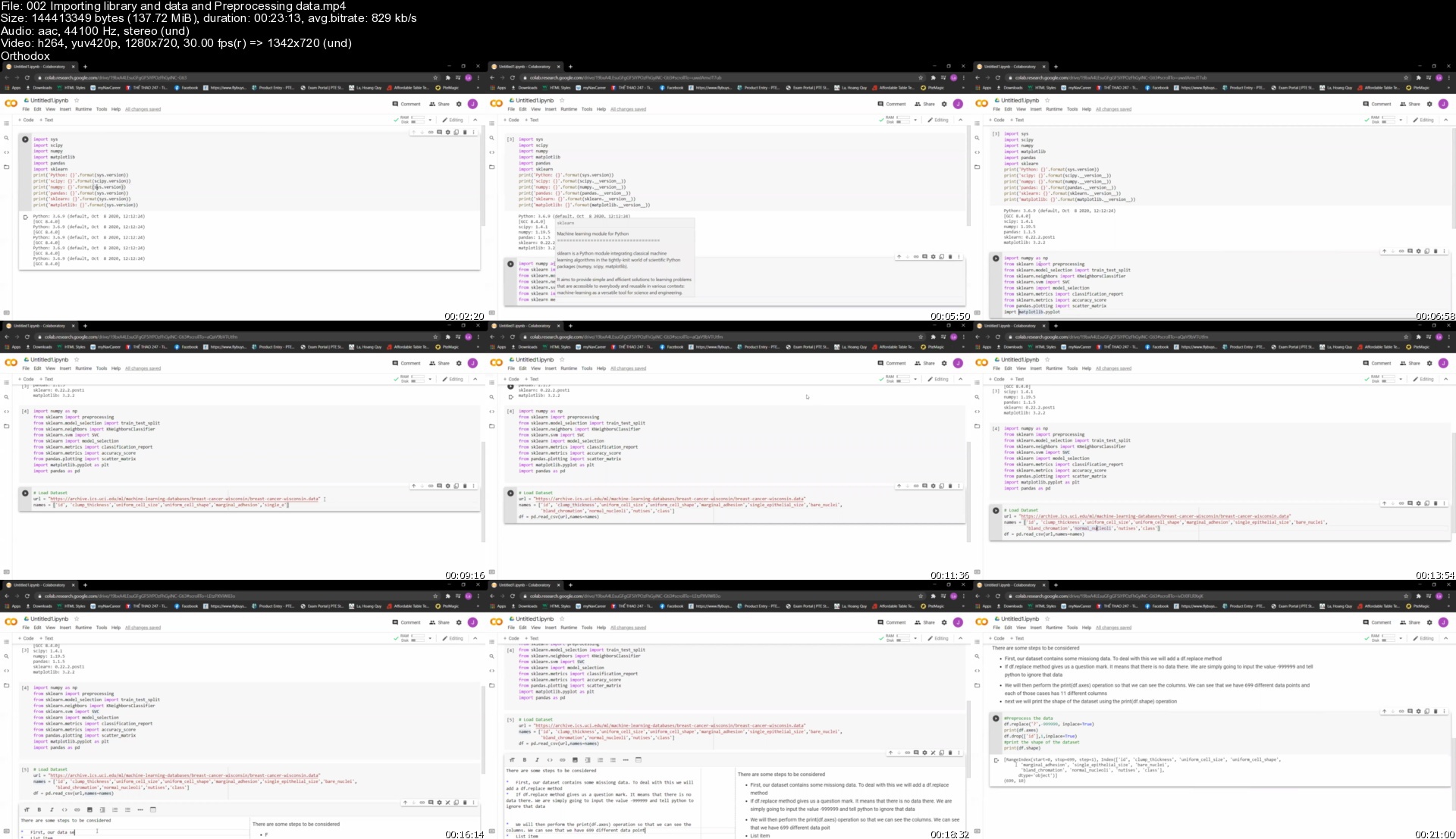

The Complete Healthcare Artificial Intelligence Course 2021 (Updated 04/2021)
MP4 | Video: h264, 1280x720 | Audio: AAC, 44.1 KHz, 2 Ch
Genre: eLearning | Language: English + srt | Duration: 117 lectures (17h 56m) | Size: 6.5 GB
Creating powerful AI model for Real-World Healthcare applications with Data Science, Machine Learning and Deep Learning
What you'll learn:
Pandas.
Matplotlib.
Sigmoid activation function.
Tanh activation function.
ReLU activation function.
Leaky Relu activation function.
Exponential Linear Unit activation function.
Swish activation function.
Markov models.
Support Vector Machines
Other common classifiers
Import data from the UCI repository.
Convert text input to numerical data.
Build and train classification algorithms.
Compare and contrast classification machine learning.
Building the AI.
Machine learning and deep learning model based on the given data with high accuracy.
RF with Response Coding.
Maximum voting Classifier.
Stacking model.
Random Forest Classifier.
One-hot Encoding.
NLP (Natural Language Processing)
NLTK (Natural Language Toolkit)
Logistic Regression.
Naive Bayes
Response Encoding
Linear Support Vector Machines
Geolocation Features.
Handling Missing Data And Anomalies in Python.
Data standardization.
Temporal Features.
Seaborn
Deep Learning.
Keras.
Google Colab .
Anaconda.
Jupiter Notebook.
Requirements
There will be no Prerequisites.
Basic knowledge of Python will be good.
But everything will be taught from the round up.
Description
Interested in the field of Machine Learning, Deep Learning and Artificial Intelligence? Then this course is for you!
This course has been designed by a software engineer. I hope with my experience and knowledge I did gain throughout years, I can share my knowledge and help you learn complex theory, algorithms, and coding libraries in a simple way.
I will walk you step-by-step into the Machine Learning, Artificial Intelligence and Deep Learning. With every tutorial, you will develop new skills and improve your understanding of this challenging yet lucrative sub-field of Data Science.
This course is fun and exciting, but at the same time, we dive deep into Machine Learning, Deep Learning and Artificial Intelligence . Throughout the brand new version of the course we cover tons of tools and technologies including:
Deep Learning.
Google Colab
Anaconda
Jupiter Notebook
Artificial Intelligent In Healthcare.
Artificial Neural Network.
Neuron.
Activation Function.
Keras.
Pandas.
Seaborn.
Feature scaling.
Matplotlib.
Generating a DNA Sequence.
Data Pre-processing.
Sigmoid Function.
Tanh Function.
ReLU Function.
Leaky Relu Function.
Exponential Linear Unit Function.
Swish function.
Markov Models.
K-Nearest Neighbors Algorithms (KNN).
Support Vector Machines (SVM).
Importing library and data.
Deep feedforward networks.
Analysing Data.
Exploratory Analysis.
Handling Missing Data And Anomalies in Python.
Data standardization.
Temporal Features.
Geolocation Features.
Data Scaling.
Data Visualization.
Visualizing Geolocation Data.
Understanding Machine Learning Algorithm.
Splitting Data into Training Set and Test Set.
Training Neural Network.
Model building.
Analysing Results.
Model compilation.
A Comparison Of Categorical And Binary Problem.
Make a Prediction.
Testing Accuracy.
Confusion Matrix.
ROC Curve.
One-hot Encoding.
NLP (Natural Language Processing).
NLTK (Natural Language Toolkit).
Logistic Regression.
Naive Bayes.
Response Encoding.
Linear Support Vector Machines.
RF with Response Coding.
Random Forest Classifier.
Stacking model.
Maximum voting Classifier.
Moreover, the course is packed with practical exercises that are based on real-life examples. So not only will you learn the theory, but you will also get some hands-on practice building your own models. There are five big projects on healthcare problems and one small project to practice. These projects are listed below:
Predicting Taxi Fares in New York City
DNA Classification Project.
Heart Disease Classification Project.
Diagnosing Coronary Artery Disease Project.
Breast Cancer Detection Project.
Predicting Diabetes with Multilayer Perceptrons Project.
Iris Flower.
Medical Treatment Project.
And as a bonus, this course includes one extra big projects for each month.
Who this course is for
Anyone interested in Machine Learning.
Students who have at least high school knowledge in math and who want to start learning Machine Learning, Deep Learning, and Artificial Intelligence
Any intermediate level people who know the basics of machine learning, including the classical algorithms like linear regression or logistic regression, but who want to learn more about it and explore all the different fields of Machine Learning, Deep Learning, Artificial Intelligence.
Any people who are not that comfortable with coding but who are interested in Machine Learning, Deep Learning, Artificial Intelligence and want to apply it easily on datasets.
Any students in college who want to start a career in Data Science
Any data analysts who want to level up in Machine Learning, Deep Learning and Artificial Intelligence.
Any people who are not satisfied with their job and who want to become a Data Scientist.
Any people who want to create added value to their business by using powerful Machine Learning, Artificial Intelligence and Deep Learning tools. Any people who want to work in a Car company as a Data Scientist, Machine Learning, Deep Learning and Artificial Intelligence engineer.
Any people who want to create added value to the local hospital by using powerful Machine Learning, Artificial Intelligence and Deep Learning tools.
Any people who want to work in healthcare field as a Data Scientist, Machine Learning, Deep Learning and Artificial Intelligence engineer.
Any people who want to work in a Taxi Company as a Data Scientist, Machine Learning, Deep Learning and Artificial Intelligence engineer.
Homepage

















